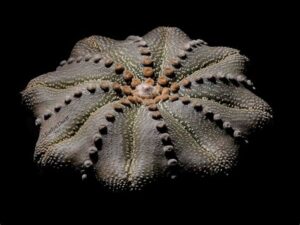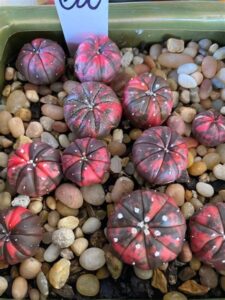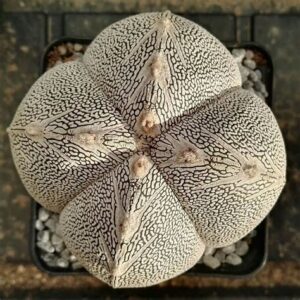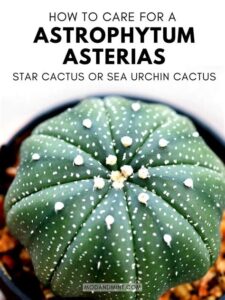Astrophytum asterias, more commonly known as the Star Cactus, is a fascinating species within the cactus family. Among its myriad variants, the Super Kabuto is particularly noteworthy for its exceptional beauty and unique characteristics. This article delves into the intricacies of growing this exotic variety, offering insights into its care requirements, aesthetic appeal, and propagation methods.
The allure of Astrophytum asterias Super Kabuto lies in its distinctive appearance. The cactus exhibits a flattened, star-shaped body adorned with intricate white flecks, which provide a striking contrast against its green surface. These flecks are actually minute clusters of woolly hairs, contributing to the visual appeal of this succulent. Understanding these visual characteristics is essential for recognizing healthy specimens in the marketplace and for appreciating the diversity within this captivating species.
Understanding the Origins and Characteristics
To cultivate Astrophytum asterias Super Kabuto successfully, one must first comprehend its native habitat. This peculiar cactus hails from the arid regions of Mexico, where it thrives in well-draining, sandy soils with minimal rainfall. This understanding emphasizes the necessity of creating an environment that mimics its natural conditions to promote healthy growth.
The Super Kabuto variant exhibits some distinctive traits that set it apart from other cacti. Typically, it reaches a diameter of 4 to 6 inches when fully matured, possessing a flat, disc-like form. The cactus is ribbed, featuring five to seven pronounced ribs. The white flecks are most prominent in this variety, and this ornamental quality makes it a desirable specimen among collectors.
The Ideal Growing Conditions
Creating the optimal growing conditions for Astrophytum asterias Super Kabuto is paramount for successful cultivation. Ensuring the right potting mix and environmental factors plays a vital role in the health of this cactus.
Soil Requirements: A well-draining soil mix is essential for the Super Kabuto. A combination of potting soil, sand, and perlite or pumice is recommended. This mixture not only provides the necessary drainage but also mimics the gritty substrates found in their natural habitat. Avoid using heavy soil that retains moisture, as it can lead to root rot.
Temperature and Light: Astrophytum asterias Super Kabuto prefers warm temperatures ranging from 70°F to 100°F during the day, and it can tolerate cooler night temperatures as low as 50°F. However, it is essential to protect the cactus from frost. In terms of light, this cactus thrives in bright, indirect sunlight. Direct sun exposure can scorch the delicate skin of the cactus, so placing it near a window with filtered light or utilizing grow lights when necessary is advisable.
Watering Practices: The watering practices for this succulent are quite crucial. During the growing season, which typically spans from spring to early fall, water the cactus thoroughly but allow the soil to dry out completely between waterings. Overwatering can easily lead to fungal infections and root decay. When winter arrives, the plant enters dormancy, requiring even less water; it’s important to reduce the watering frequency significantly. A good rule of thumb is to check the soil moisture level before watering in the colder months.
Propagation Techniques for Super Kabuto
For enthusiasts looking to expand their Astrophytum asterias Super Kabuto collection, propagation can be performed through several methods, including seeds and offsets. Each method has its unique benefits and challenges.
Seed Propagation: Growing Super Kabuto from seeds is a rewarding yet meticulous process. To start, acquire high-quality seeds from reputable sources. Sowing should be undertaken in a well-draining substrate. It’s best to mimic the warm and humid environment of their natural habitat to promote germination. A mini greenhouse or a propagation dome can help maintain humidity levels. Keep the seeds in a bright area, avoiding direct sunlight until they sprout, which may take several weeks. Once seedlings develop, they can be gradually acclimatized to more direct sunlight.
Offsets and Division: A more straightforward method of propagation involves taking offsets or pups, which are smaller cacti that grow from the base of the parent plant. Carefully detach the offset with a sterile knife, allowing it to callous over for a few days. Plant the offset in a well-draining mix, and follow the same watering and care regimen as the parent plant.
Common Pests and Diseases
Like all plants, Astrophytum asterias Super Kabuto is susceptible to various pests and diseases. Monitoring the health of your cactus is crucial for early detection and remediation.
Identifying Pests: Common pests that may afflict Super Kabuto include mealybugs, spider mites, and scale insects. Mealybugs appear as white, cottony masses, often situated in the crevices of the cactus. Spider mites, on the other hand, can be identified by the fine webbing they create. Regular inspections and treating infestations with insecticidal soap can help manage these nuisances effectively.
Disease Management: Fungal infections often arise due to improper watering practices. Signs of rot generally present as mushy, discolored spots on the cactus. To prevent disease, stick to a meticulous watering schedule, ensuring that the soil has ample time to dry out. In cases where rot has set in, it might be necessary to remove the affected parts or, in extreme cases, undertake a complete repotting.
The Rewarding Experience of Growing Super Kabuto
Cultivating Astrophytum asterias Super Kabuto is a rewarding endeavor for both novice and seasoned gardeners alike. With its unique beauty and relatively easy care requirements, this succulent can be a delightful and striking addition to any collection. The journey from seedling to mature cactus comes with its challenges, but the satisfaction derived from nurturing these extraordinary plants is unparalleled.
Embracing the distinctive characteristics, ideal growing conditions, propagation methods, and potential issues surrounding Astrophytum asterias Super Kabuto allows for a comprehensive understanding of this exotic cactus. Whether it is the thrill of watching seeds sprout or the joy of seeing a flourishing plant display its trademark white flecks, each step brings with it an appreciation for the beauty of nature.
By fostering proper care techniques and remaining vigilant against potential adversaries, one can successfully cultivate the Super Kabuto. In doing so, you not only enhance your gardening skills but also connect more profoundly with the enchanting world of cacti.





Leave a Comment